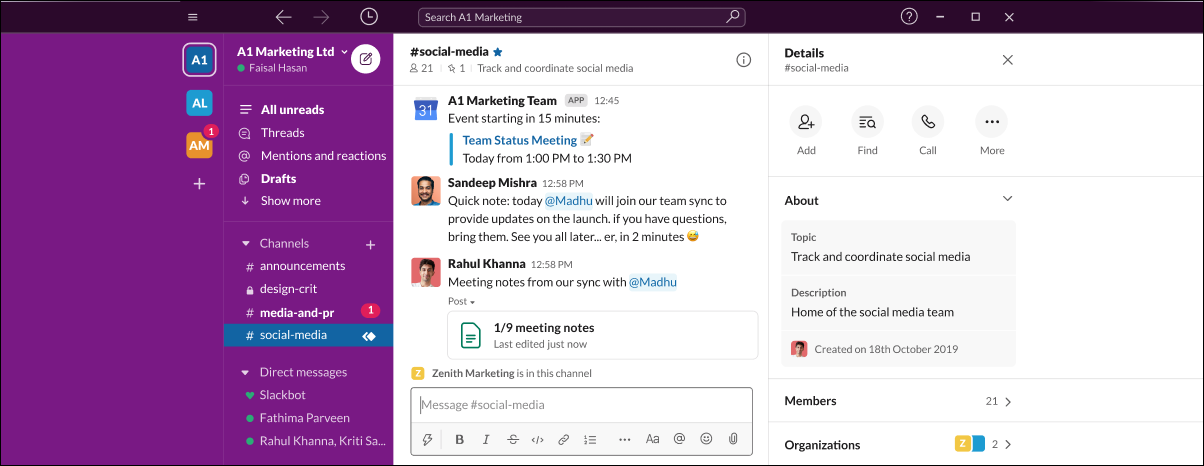Collaboration Portal: For Productivity and Customer Satisfaction in the Digital Era

Remote work has become the new normal in the pandemic. Businesses that lagged in digital connectivity had to come up with remote solutions. They learned how to manage their teams remotely, encourage digital collaboration, and provide customers with their needed tools.
The outcome is that virtual format has now become a norm. 54 percent of Americans say that they want to continue working from home. 66 percent expect to go for a hybrid model. As a result, communication and collaboration have undergone a drastic shift. Digital collaboration has become the norm, and post-pandemic, it’s likely to continue.
Businesses must adopt new digital methods like video chat, file sharing, and chat options to connect with employees and customers. And that’s what we are going to cover in this article.
- Collaboration portal features
- Collaboration portal best practices
Before we get into the features, let’s try to understand the role of the collaboration portal in your organization. Whether it’s a small team with a few customers or a big organization, collaboration software bridges the communication gap between employees and customers. As a business, you can increase task completion, knowledge gathering, team-building exercises, and more. A collaboration tool connects customers/employees with the right people and channelizes information sharing to drive the right decisions.
Apart from that, there are various ways portals benefit your organization:
- Streamlines communication by providing customers and employees with a unified interface: no more redundant emails and calls.
- Facilitates information storing and data sharing with communities, small groups, and individuals with a few clicks.
- Enables teammates to work together even remotely. They can share documents, participate in discussions and do a lot more within a single workspace.
- Increases accountability and allows team members to go back and check the mistakes and prevent them from recurring.
- Improves relationships with external stakeholders by allowing them to browse the knowledge base, submit questions, and manage everything related to tickets.
- Eliminates trivial activities such as status updates, to-do lists, meetings requests. You can manage it all from one place.
- Promotes business expansion and growth. Collaboration inspires teams to participate, share ideas, raise bars, and foster communication for business enhancement.
- Builds your brand and shows you in a positive light in front of your customers.
To garner these benefits, having the right set of features in your collaboration software is essential. And what are those features?
Let’s see it.
Must-Have Collaboration Portal Features
Unified Communication
A centralized network with internal communication capabilities eliminates the bottlenecks in human interaction. With a centralized platform, you and your stakeholders can communicate related to a project within one place. Without searching through email threads, you can find relevant information in the chat group. The conversation threads help team members to provide feedback, request approvals, and send documents to each other. Apart from this, you can take advantage of video calls, virtual meetings, streaming – everything from a single platform.

Slack, a communication tool, is a good inspiration for internal collaboration. It includes features like – search, notifications, screen sharing, customizable chatbots, and third-party integrations. Some solutions also allow attaching files with comments in internal messaging features to improve virtual connectivity.
Here’s what you should include to enhance communication:
- Real-time chat and messaging
- Audio and video conferencing
- Discussion threads
- File sharing
- Notifications and Alerts
Tip: Include stickers, GIFs, emojis in the chat platform. Offer all the possible communication channels in a single group. Let your team members choose how they would like to communicate.
Task Management
If the purpose of the collaboration is to expedite projects, then managing tasks would simplify the processes. Your remote team can manage their tasks and work as per their routine. You, on the contrary, can set up a task list for teams, send reminders to you and your team members, and attach files to the list for quick access.
.gif)
With task management, you can track your employees’ accomplishments, including project progress. It helps you meet goals and keep everyone on the same page. Trello, for example, allows users to collaborate within a board and create a card for every task that moves across the board with easy drag-and-drop functionality. Users can add others to the task and even attach files to it. Other examples include Asana and Wrike.
Key features to include:
- Boards to create and manage tasks
- Task assignment to add people to tasks
- Task prioritization to set schedule
- Planning and scheduling to meet deadlines
- File management to store and attach files
- Comments and real-time sharing
Tip: Offer easy-to-read calendar views of tasks and deadlines. It will help you and your team members to plan, schedule, and adjust tasks based on their objectives and goals.
Original Source: https://www.crmjetty.com/blog/collaboration-portal-in-digital-era/
- Industry
- Art
- Causes
- Crafts
- Dance
- Drinks
- Film
- Fitness
- Food
- Jogos
- Gardening
- Health
- Início
- Literature
- Music
- Networking
- Outro
- Party
- Religion
- Shopping
- Sports
- Theater
- Wellness
- News


